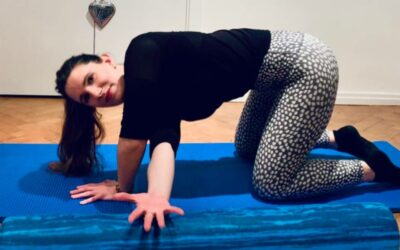With so many of us working from home, and perhaps for longer hours than we usually would, our home office set up is more important than ever. Over the last year, I have certainly seen an increased number of patients suffering from spinal pain as a direct result from a poor home office ergonomics. I wanted to share with you my suggestions, that have helped my patients improve their home working behaviours and environment.
- Take micro-breaks every 20 minutes. This should involve 20 seconds of micro-movements. Such as shrugging your shoulder, rotating your upper back and neck from side to side.
- Stand-up every hour as a bare minimum.
- Your mouse and keyboard should be at the same height (elbow height) with your elbows close to the sides of your body ideally at 90 degrees. Make sure your mouse and keyboard aren’t too far away.
- Wrists should be kept in a neutral position.
- We should work as close to the center of our body as possible. I.e. not turned to one side. Monitors should be centered on the desk.
- Any documents should be placed at the same height as your computer screen, you could use a document holder to assist.
- Allow the eyes to take a break from your screen by exercising them. This can be done by focusing on objects further in the distance regularly, when you take a break from staring at your computer screen.
- Your head should be straight, shoulders relaxed, and your line of vision should be at the top third of your screen.
- Chair should support a neutral posture and provide sufficient support for the length of your spine. Your bottom should be right at the back of the chair, and contact should be maintained at the level of shoulder blades.
- Lumbar support such as an adjustable lumbar roll will help you maintain good spinal alignment and posture.
- Knees should be bent at 90 degrees, and not touch the bottom of the work surface or the seat edge.
- Feet should be flat on the floor, and if they aren’t a foot stool is needed.
- Headsets should be used rather than handheld phones. If you have to use handheld devices this should be for short durations, and with your upper limb supported, this will reduce the strain through your neck.
- Furthermore, Handheld devices should be held at eye level (phones, iPad’s, kindles etc.) to prevent strain on the neck from looking down for long periods.
- Your office space should be well lit and well ventilated, with no glare from lights or windows on your computer screen.
- You should be able to maneuver yourself in/out of your desk chair without space restrictions or obstruction.
- Standing for prolonged periods, can also cause fatigue. Standing desks are not necessarily better than sitting desks, which is evidence based supported. The key is taking regular breaks from static postures.
- In general sitting on a ball is not recommended for any extended period.
- If using a laptop, a separate mouse and keyboard are required (so that arms are supported and elbows bent at 90 degrees), and the laptop should be placed to a height such that the eye level when the head is straight is at the top third of the screen.


